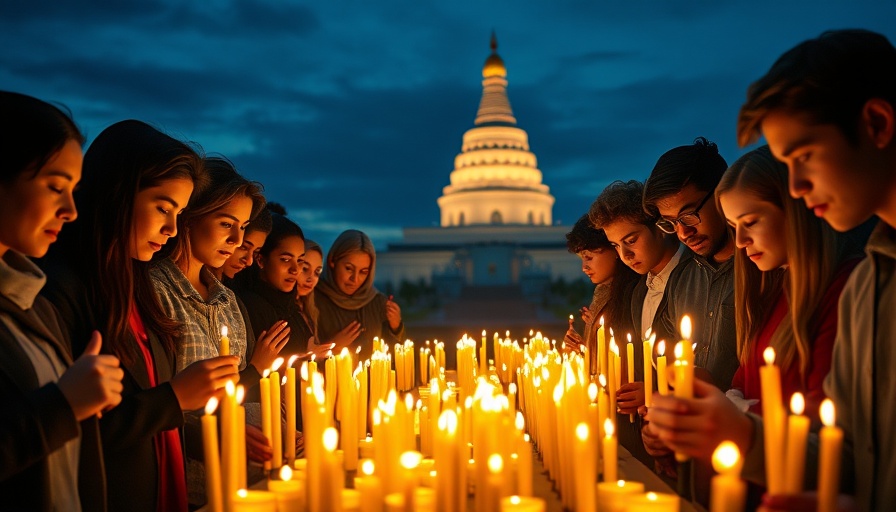
The Spark of Unrest: How Nepal's Young Generation Came Together
The tumultuous events in Nepal unfolded in a whirlwind of protest and passion, igniting a spark among the country’s Gen Z youth. Their revolution, however, emerged not as a planned uprising but as a reaction to frustration—with escalating corruption, widespread nepotism, and what they viewed as an archaic political system resistant to change. Initial anger was ignited by a governmental ban on social media, rife with implications for their fundamental rights. This ban was perceived as an attack on free speech, leading thousands of young Nepalis onto the streets, unified by a common goal: to demand accountability and transparency from their leaders.
The Unforeseen Escalation of Violence
While the protests began peacefully, they quickly devolved into chaos. What was intended as a demonstration became a scene of violence, culminating in an unnecessary loss of life. Reports indicate that the security forces, in a misguided attempt to control the protests, shot at demonstrators—resulting in at least 74 deaths. This shift in circumstances shocked many within the movement, including activist Tanuja Pandey, who highlighted how the unexpected violence transformed the nature of their struggle from peaceful assembly to survival. The wave of bloodshed contrasted sharply with the initial goals of the protests, which sought only to shine a light on the corruption plaguing their nation.
A Broader Movement: Connecting Across Borders
Interestingly, Nepal's unrest mirrors a larger trend seen across South Asia, where youth-led movements have challenged entrenched powers in neighboring countries like Sri Lanka and Bangladesh. The spiral of frustration, often stemming from economic hardship and political impunity, has galvanized young populations toward action. It demonstrates a wider generational reckoning with the status quo. As each protest evolves, the calls for justice and reform echo throughout the region, revealing a unified cry for change amongst disenfranchised youth.
Social Media as a Double-Edged Sword
Social media has played a crucial role in the unfolding events in Nepal, serving both as a catalyst for mobilization and a battleground for disinformation. Initially, platforms like TikTok and Discord energized the youth, allowing them to organize swiftly against government oppression. Yet, the very platforms heralded for transparency also became vehicles of misinformation and division. As the protests escalated, participants increasingly found it challenging to navigate the narrative of their own movement. They learned that social media, while useful, could distort public perception of their intentions, framing them as violent rather than the civil rights defenders they aspired to be.
The Way Forward: Committing to Change
In the aftermath of the violence, Nepal faces pivotal decisions about its political future. With elections set to determine the next government, young activists wonder if the momentum for reform will shape a revised political landscape or if disillusionment and apathy will set in. Following the resignation of Prime Minister K.P. Sharma Oli, there is a tentative sense of hope among the protestors, particularly with the appointment of Sushila Karki as Nepal's first female prime minister. This moment could serve as a turning point for empowering youth voices and creating structural changes, but it will require sustained pressure from the public and a commitment to addressing the underlying concerns that sparked the protests in the first place.
Call for Action: The Importance of Political Engagement
As young Nepalis navigate their new political landscape, active participation is essential. Engaging with local government structures and advocating for anti-corruption measures will not only allow them to influence change directly but will also guarantee that their voices continue to be heard in the long term. The path ahead will not be easy, but by staying informed and committed, the next generation has the potential to create a vibrant and accountable democracy in Nepal.
In the end, Nepal’s Gen Z revolution transcends its borders, thus prompting a broader reflection on how young people around the world can harness similar technology and approaches to demand accountability and reform.
 Add Row
Add Row  Add
Add 




Write A Comment